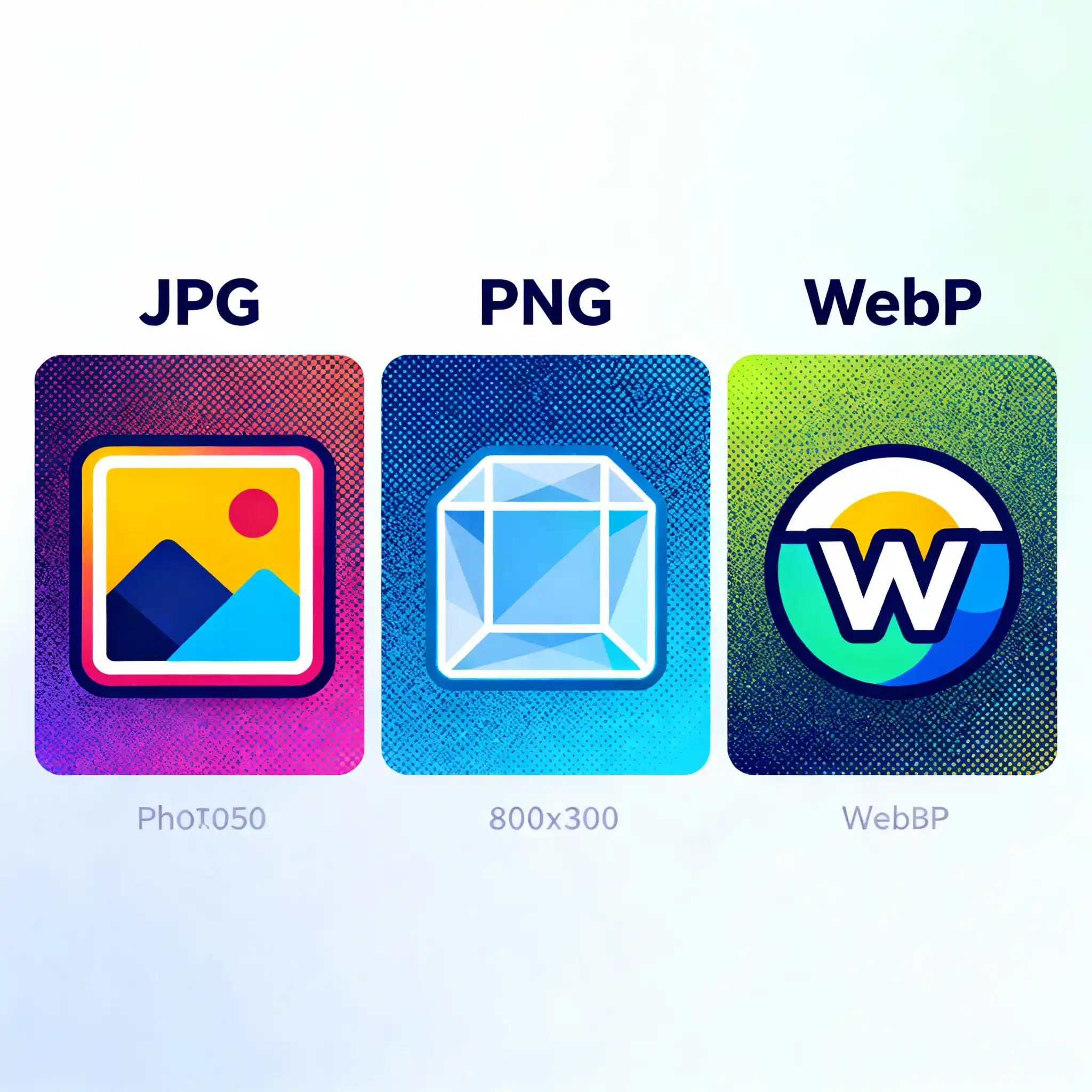Choosing the Best Image Format for Web in 2025: JPG vs PNG vs WebP

Website performance has become one of the most important ranking factors for Google. A slow-loading page not only drops your search rankings but also reduces user engagement. Since images often take up more than 60% of total page weight, choosing the right image format can drastically improve speed.
In this 2025 updated guide, we compare the three most widely used formats — JPG, PNG, and WebP — and help you choose the best one for your website.
JPG (or JPEG): The Photographer’s Choice
JPG is one of the most popular formats online. It uses lossy compression, meaning some image data is removed to reduce file size. This makes JPG perfect for complex visuals.
- Best for: Photographs, real-life images, gradients
- Pros: Small file size, excellent for large photos, widely supported
- Cons: Loses quality when highly compressed; no transparency support
PNG: The Graphic Designer’s Format
PNG uses lossless compression, meaning the image retains 100% of its original quality. The biggest advantage of PNG is transparency support.
- Best for: Logos, icons, UI graphics, backgrounds requiring transparency
- Pros: Perfect image quality, supports transparency
- Cons: Larger file sizes, especially for photos
WebP: The Modern All-Rounder
Created by Google, WebP is a next-generation format that supports lossy + lossless compression and transparency. It offers 25–35% smaller file sizes than JPG/PNG with equal quality.
- Best for: All website images (photos, graphics, icons, screenshots)
- Pros: Smallest sizes, supports transparency, supports animation, ideal for SEO
- Cons: Very old browsers may not support it, but support is now over 97%
Final Verdict: Which Format Should You Use in 2025?
If you want the fastest possible website performance, WebP is the best format in 2025. It’s smaller, faster, and high-quality.
Recommended strategy:
- Use WebP as your default format.
- Provide JPG/PNG fallback using the
<picture>tag.
Try our free converter: Convert images to WebP instantly →
Final Optimization Tips
- Compress images: Use our image compressor before uploading.
- Use descriptive filenames: Example —
optimized-webp-format.webp. - Add alt text: Boosts SEO + accessibility.
- Lazy load images: Use
loading="lazy"for better performance.
Want to learn more? Read our next guide: The Ultimate Guide to Image Compression →